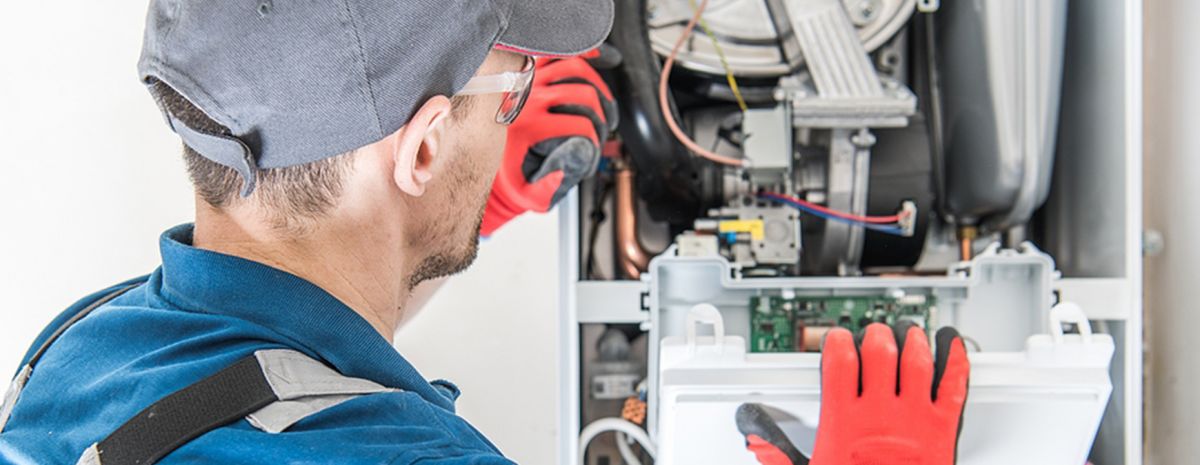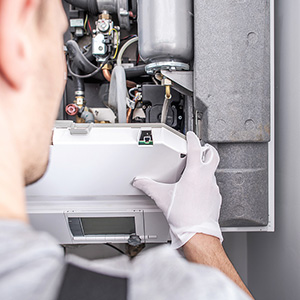
The majority of households in the United States rely on some type of furnace or boiler for heat.1 Overall, natural gas furnaces are the most commonly used heating equipment in most parts of the country. The southeastern parts of the country are the exception; here, electric furnaces are more common.2
What is a furnace? What does a furnace look like? How does a furnace work?
Students in HVAC classes now could potentially find themselves working on furnaces once they enter the field as technicians. Learning the answers to these questions could prove helpful for them.
What Does a Furnace Look Like?
Furnaces may vary slightly in appearance, depending on the model. About 49% of home heating systems rely on natural gas and another 34% on electric heat systems, which indicates again that gas furnaces may be more prevalent.3
What is a gas furnace? It is a gas-fueled, forced air system that produces heat.4 Typically, the furnace is placed indoors in the attic, closet or basement. The furnace looks a lot like a metal cabinet.5 It can vary in width depending on the model. This cabinet holds key components:
Get Started on the Path to a New Career
Fill out our form to learn how we can help you change your life.
- Gas valves and burners
- A heat exchanger
- A blower motor, motor pulley, blower pulley and belt
- A fan and limit control4
Several pipes, lines, inlets or outlets connect to the exterior of the furnace, including a flue for exhaust, a cold-air return duct, a warm-air plenum that leads to the ducts and a gas supply line.4
The outer elements of a furnace system necessary for function are the ducts that deliver forced air and the thermostat, which is typically placed in a central location in the home and connected to the furnace via wiring.4
What Does a Furnace Do?
The Greek word for oven, “fornax,” is where the furnace derives its name. The furnace provides heat either with gas or electricity. The system is designed to efficiently produce a large volume of heat and then force that heat with a fan (forced-air) system through the ventilation or duct system.7
How Does a Furnace Work?

Furnaces may work slightly differently, depending on several factors. Since gas furnaces may be the most common, here is a look at how these furnaces function.
A gas furnace is directly regulated by the thermostat. The thermostat sends an electrical signal to the furnace when the device detects the space has fallen below the set temperature. From there, several actions take place within the furnace:4
- The relay in the furnace sends a signal for the gas valve to open and for the blower system to power on.
- Gas flows to the burner.
- The electronic ignition or the pilot light, whichever is equipped, ignites the gas burner within the furnace’s combustion chamber.
- Heat accumulates in the heat exchanger.
- The blower pushes air around the heat exchanger and into the hot-air plenum, which leads through the ducts and out to the vents.
- Any gases present as a result of the combustion action are vented out of the furnace and through the flue.4
Electric furnaces function much like gas furnaces. The primary difference between the two is that an electric-powered furnace has heating elements inside that heat up via electrical power instead of gas burners that are ignited with gas.8
What Types of Furnaces Could HVAC Techs Service?
HVAC techs may run into a handful of types of units when performing furnace maintenance in the field. The four primary types of furnace in use today are oil, electric, propane and gas. Many furnaces use heating elements, while others may rely on either a heat chamber or heat exchanger. Some furnaces are designed to use less energy than others.9
Whether servicing traditional gas or high-efficiency furnaces, a thorough understanding of how a furnace works may be helpful to HVAC technicians.
Additional Sources
1https://www.energy.gov/energysaver/home-heating-systems/furnaces-and-boilers
2https://www.eia.gov/todayinenergy/detail.php?id=30672
3https://www.energy.gov/energysaver/heat-and-cool/home-heating-systems
4https://www.hometips.com/how-it-works/gas-furnace-diagram.html
5https://servicewhale.com/pages/what-does-a-gas-furnace-look-like
6https://www.questargas.com/ForEmployees/qgcOperationsTraining/Furnaces/Grandaire_WFSR.pdf
7https://www.ars.com/blog/difference-heater-furnace-boiler
8https://catesheatingandcooling.com/blog/how-electric-furnace-work/
9https://www.hvac.com/blog/types-of-furnaces/
This blog has been labeled as archived as it may no longer contain the most up-to-date data. For a list of all current blog posts, please visit our blog homepage at https://www.rsi.edu/blog/

